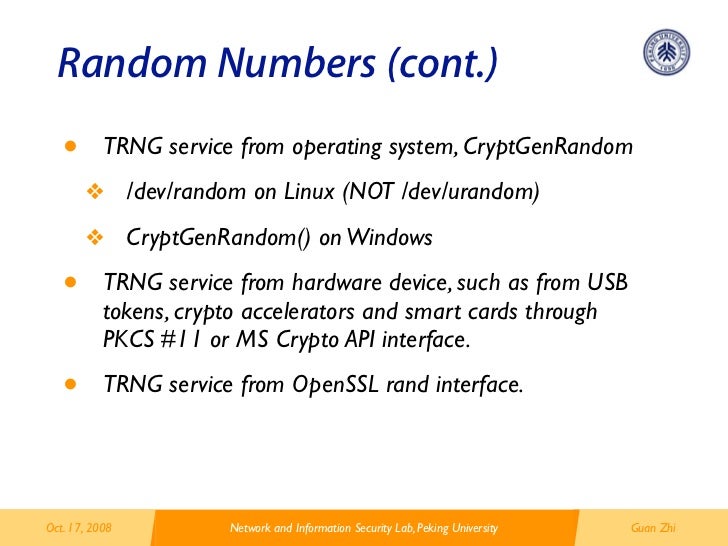Aes 256 Key Iv Generator
- Aes Iv Generator Online
- Aes Encryption Key Generator
- Aes 256 Key Iv Generator Reviews
- Aes 256 Key Iv Generator Software
- Aes Key And Iv Generator
- Aes 128 Key Generator
Let's illustrate the AES encryption and AES decryption concepts through working source code in Python.
The first example below will illustrate a simple password-based AES encryption (PBKDF2 + AES-CTR) without message authentication (unauthenticated encryption). The next example will add message authentication (using the AES-GCM mode), then will add password to key derivation (AES-256-GCM + Scrypt).
Simple AES-CTR Example
- Since you need a CSRNG for the IV, you might as well use the same generator for the 256 bit key. The same issue of correct seeding still remains however. The other issue is if you transmit the same file repeatedly. The purpose of the IV is to make sure that the cipher text is unique per transmission, even if the plain text is the same.
- Key generator This page generates a wide range of encryption keys based on a pass phrase. Aes-256-cfb: aes-256-cfb1: aes-256-cfb8: aes-256-ecb: aes-256-ofb.
AES-256 Encryption with Java and JCEKS. To the algorithm like the AES key and the Initial Vector (aka IV). Easy it is to create new AES-256 keys that reference an alias inside of a keystore. AESCrypt – AES 128 / AES 192 / AES 256 Class for ASP.NET C# with advanced settings Yet Another AES-Rijndael cryptographic class for ASP.NET C# to easily handle basic and advanced crypto tasks using 128, 192 and 256 Key Length and a whole lot of custom options & settings: Hash, Padding Mode, Cipher Mode, Salt, IV & more. AES was designed to be efficient in both hardware and software, and supports a block length of 128 bits and key lengths of 128, 192, and 256 bits. How secure is AES encryption algorithm? AES encryption is used by U.S. For securing sensitive but unclassified material, so we can say it is enough secure.
Let's start with simple AES-256-CTR non-authenticated encryption.
AES is a strong algorithm to encrypt or decrypt the data. Java,.NET and C provide different implementation to achieve this kind of encryption. Java has provided certain API's by which data can be encrypted using AES algorithm. Steps to encrypt the data using AES algorithm, 256 bit encryption key and IV spec. The AES algorithm has a 128-bit block size, regardless of whether you key length is 256, 192 or 128 bits. When a symmetric cipher mode requires an IV, the length of the IV.
Install Python Libraries pyaes and pbkdf2
First, install the Python library pyaes that implements the AES symmetric key encryption algorithm:
Next, install the Python library pbkdf2 that implements the PBKDF2 password-to-key derivation algorithm:
Now, let's play with a simple AES encrypt / decrypt example.
Password to Key Derivation
First start by key derivation: from password to 256-bit encryption key.
Run the above code example: https://repl.it/@nakov/AES-CTR-in-Python.
The above code derives a 256-bit key using the PBKDF2 key derivation algorithm from the password s3cr3t*c0d3. It uses a random password derivation salt (128-bit). This salt should be stored in the output, together with the ciphertext, because without it the decryption key cannot be derived again and the decryption will be impossible.
The output from the above code may look like this:
The derived key consists of 64 hex digits (32 bytes), which represents a 256-bit integer number. It will be different if you run the above code several times, because a random salt is used every time. If you use the same salt, the same key will be derived.
AES Encryption (CTR Block Mode)
Next, generate a random 256-bit initial vector (IV) for the AES CTR block mode and perform the AES-256-CTR encryption:
Run the above code example: https://repl.it/@nakov/AES-encryption-in-Python.
The output from the above code may look like this:
Aes Iv Generator Online
The ciphertext consists of 38 hex digits (19 bytes, 152 bits). This is the size of the input data, the message Text for encryption.
Note that after AES-CTR encryption the initial vector (IV) should be stored along with the ciphertext, because without it, the decryption will be impossible. The IV should be randomly generated for each AES encryption (not hard-coded) for higher security.
Note also that if you encrypt the same plaintext with the same encryption key several times, the output will be different every time, due to the randomness in the IV. This is intended behavior and it increases the security, e.g. resistance to dictionary attacks.
AES Decryption (CTR Block Mode)
Now let's see how to decrypt a ciphertext using the AES-CTR-256 algorithm. The input consists of ciphertext + encryption key + the IV for the CTR counter. The output is the original plaintext. The code is pretty simple:
Run the above code example: https://repl.it/@nakov/AES-decryption-in-Python.
The output of the above should be like this:
Note that the aes object should be initialized again, because the CTR cipher block mode algorithm keeps an internal state that changes over the time.
Note also that the above code cannot detect wrong key, wrong ciphertext or wrong IV. If you use an incorrect key to decrypt the ciphertext, you will get a wrong unreadable text. This is clearly visible by the code below:
Run the above code example: https://repl.it/@nakov/AES-decryption-wrong-key-in-Python. /movavi-18-activation-key-generator.html.

The output of the above incorrect decryption attempt might be like this:
Now it is your time to play with the above code example. Try to to encrypt and decrypt different messages, to change the input message, the key size, to hard-code the IV, the key and other parameters, switch to CBC mode, and see how the results change. Enjoy learning by playing.
AES-256-GCM Example
Now, let's give a full example how to use the AES-256-GCM symmetric encryption construction. We shall use a different Python library for AES, called pycryptodome, which supports the the AES-256-GCM construction:

Next, let's play with the below AES-GCM example in Python, which generates a random encryption key (secret key) and uses it to encrypt a text message, then decrypts it back to the original plaintext message:
Run the above code example: https://repl.it/@nakov/AES-256-GCM-in-Python.
The AES-GCM encryption takes as input a message + encryption key and produces as output a set of values: { ciphertext + nonce + authTag }.
- The ciphertext is the encrypted message.
- The nonce is the randomly generated initial vector (IV) for the GCM construction.
- The authTag is the message authentication code (MAC) calculated during the encryption.
The encryption key size Download itools software for mac. generated in the above code is 256 bits (32 bytes) and it configures the AES-GCM cipher as AES-256-GCM. If we change the key size to 128 bits or 192 bits, we shall use AES-128-GCM or AES-192-GCM respectively.
The output from the above code looks like this:
It is visible that the encryption key above is 256 bits (64 hex digits), the ciphertext has the same length as the input message (43 bytes), the IV is 128 bits (32 hex digits) and the authentication tag is 128 bits (32 hex digits). If we change something before the decryption (e.g. the ciphertext of the IV), we will get and exception, because the message integrity will be broken:
Run the above code example: https://repl.it/@nakov/AES-256-GCM-wrong-chiphertext-in-Python.
Aes Encryption Key Generator
AES-256-GCM + Scrypt Example
Now let's give a more complex example: AES encryption of text by text password. We shall use the authenticated encryption construction AES-256-GCM, combined with Scrypt key derivation:
Run the above code example: https://repl.it/@nakov/AES-256-GCM-with-Scrypt-in-Python.
Aes 256 Key Iv Generator Reviews
The above code encrypts using AES-256-GCM given text message by given text password.
Aes 256 Key Iv Generator Software
During the encryption, the Scrypt KDF function is used (with some fixed parameters) to derive a secret key from the password. The randomly generated KDF salt for the key derivation is stored together with the encrypted message and will be used during the decryption. Then the input message is AES-encrypted using the secret key and the output consists of ciphertext + IV (random nonce) + authTag. The final output holds these 3 values + the KDF salt.
During the decryption, the Scrypt key derivation (with the same parameters) is used to derive the same secret key from the encryption password, together with the KDF salt (which was generated randomly during the encryption). Then the ciphertext is AES-decrypted using the secret key, the IV (nonce) and the authTag. In case of success, the result is the decrypted original plaintext. In case of error, the authentication tag will fail to authenticate the decryption process and an exception will be thrown.
Aes Key And Iv Generator
The output from the above code looks like this:
Aes 128 Key Generator
If you run the same code, the output will be different, due to randomness (random KDF salt + random AES nonce).